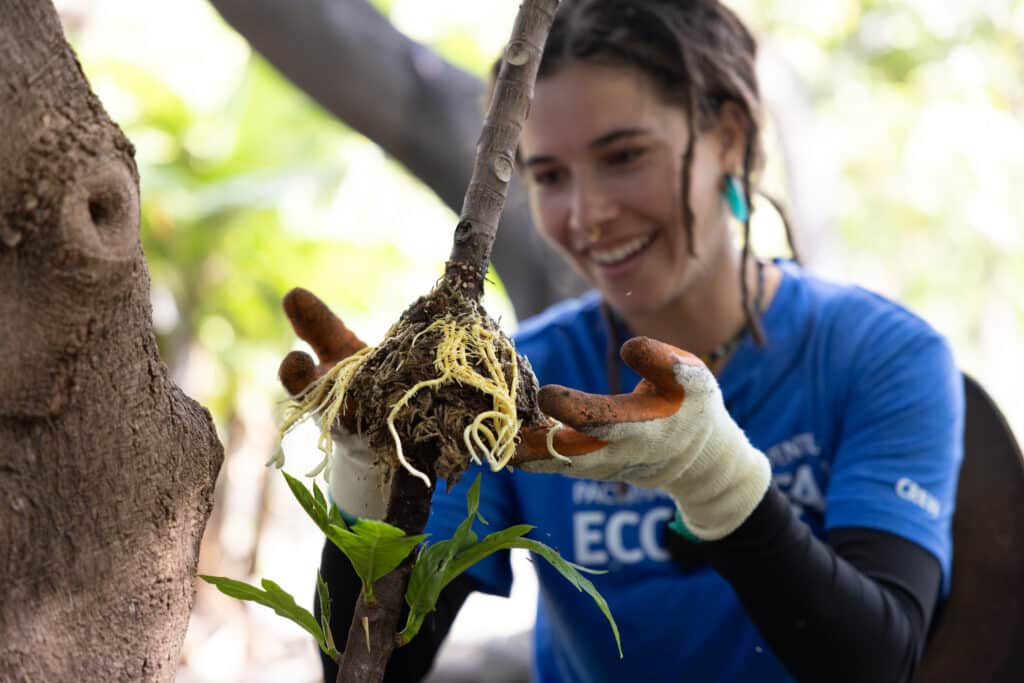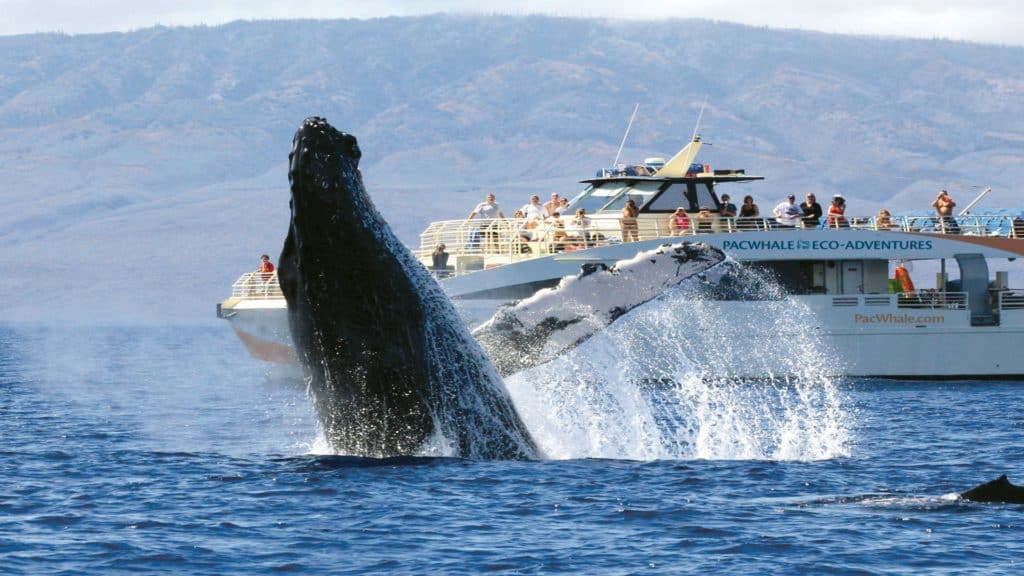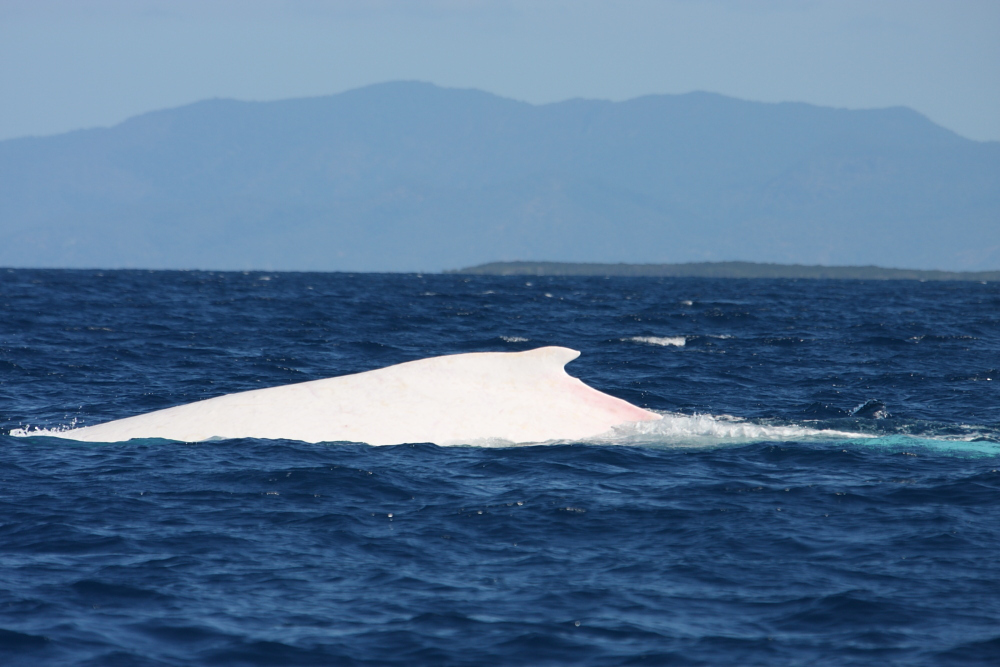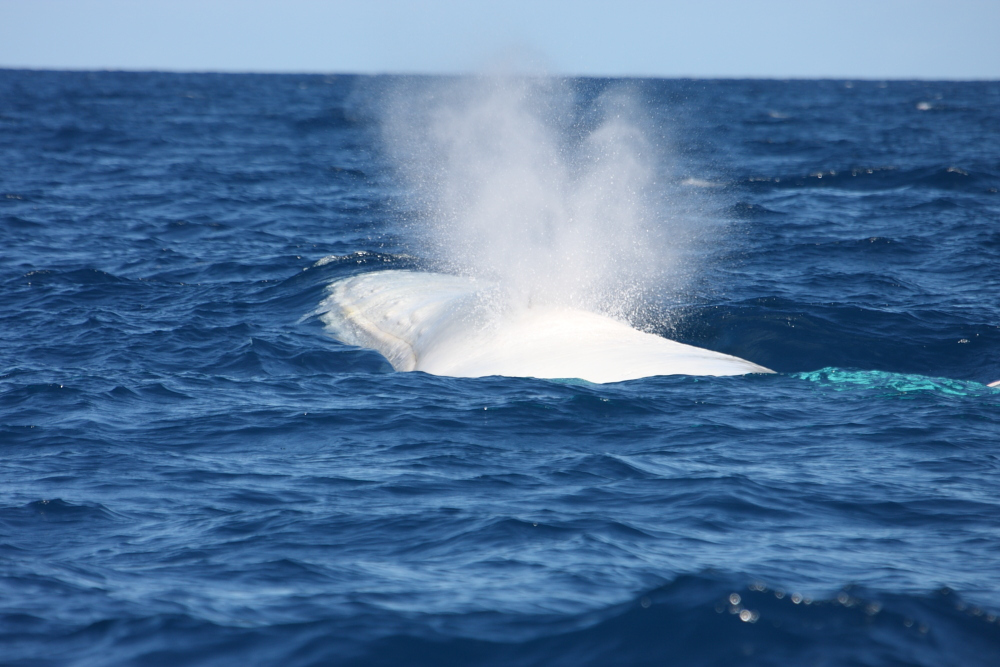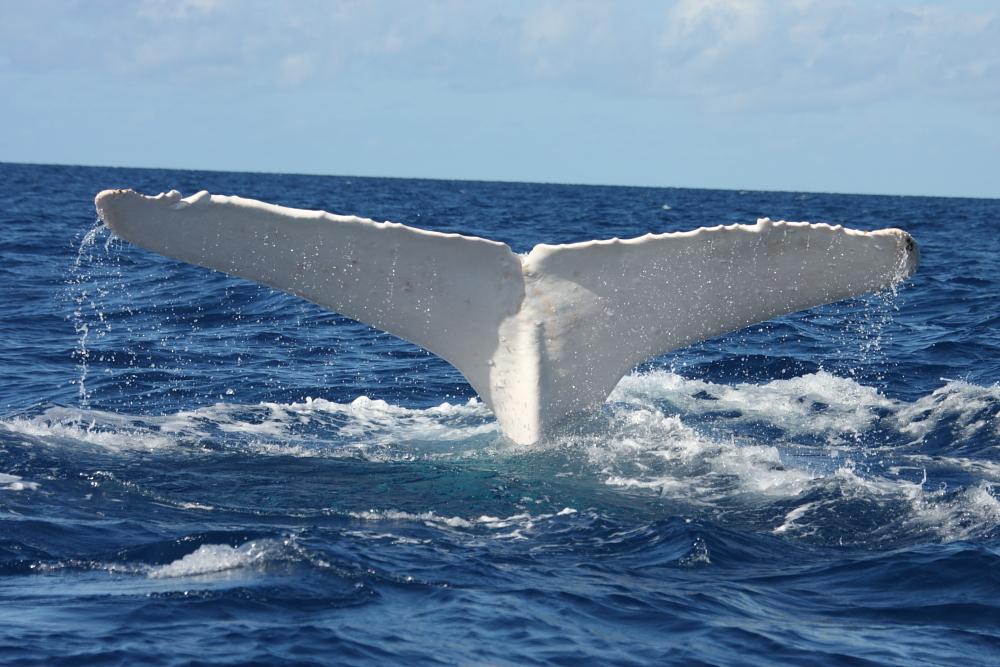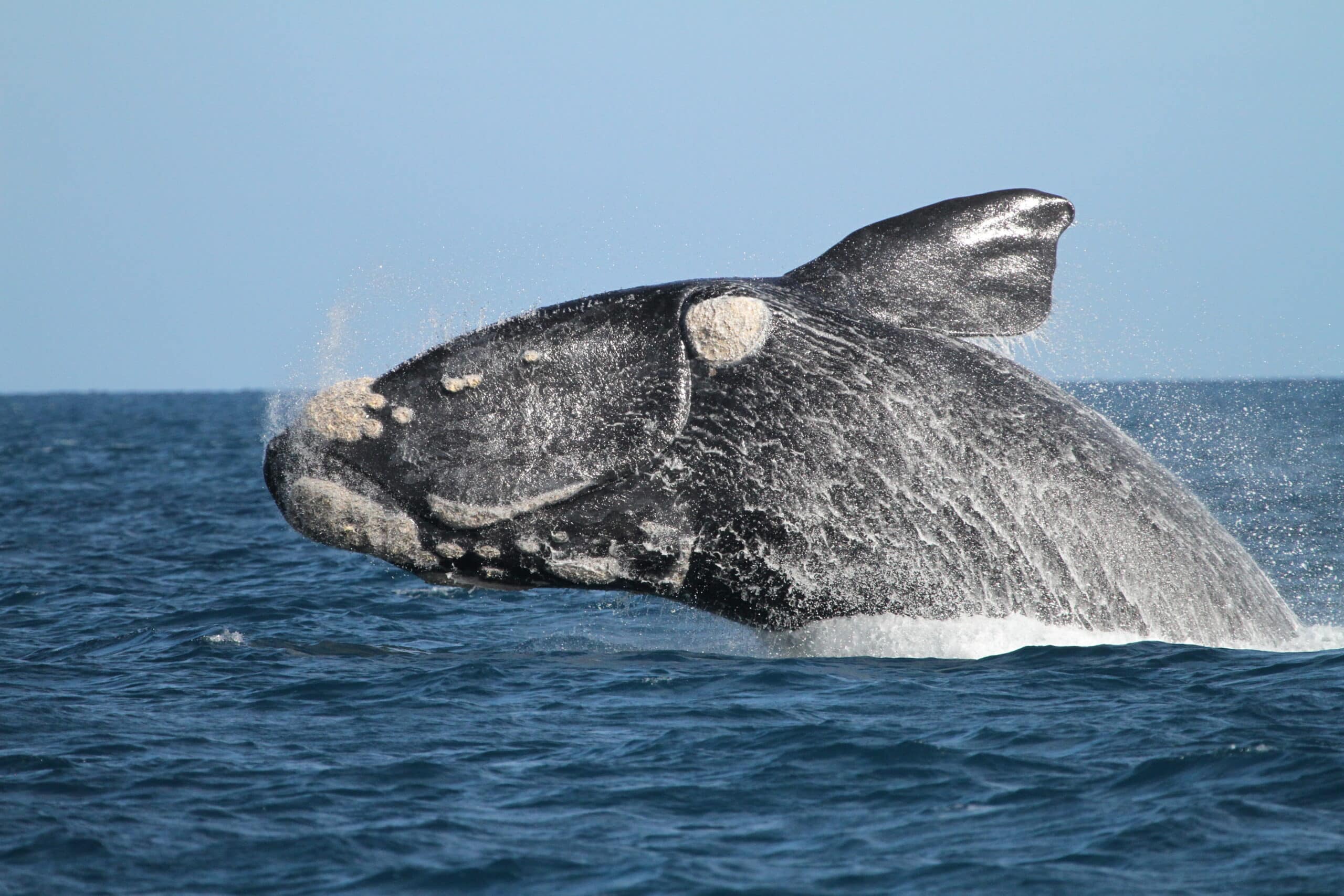Considered to be the most famous humpback whale in the world, Migaloo may be the only pure white adult humpback whale alive today. This remarkable whale was first spotted in 1991 off Byron Bay, Queensland by a group of volunteers conducting a whale count. The first photograph of Migaloo was taken through a telescope from a distance of over 5 km away. It was blurry and unclear if he was all white. In 1993 Pacific Whale Foundation researchers encountered this amazing white whale in Hervey Bay, Queensland. During this encounter we were able confirm the whale was all white and in 1998, we recorded the whale singing, a trait distinct to male humpback whales. Genetic testing in 2004 by Southern Cross University scientists further confirmed that Migaloo is a male; this confirmed what we knew because Migaloo has been recorded singing and only male humpback whales produce song.
There are a number of ways in which scientists identify Migaloo. The obvious characteristic is that he is all white, but we use other physical traits as well: his dorsal fin (on his back) is slightly hooked and his tail flukes have a distinctive shape, with spiked edges along the lower trailing side.
After sharing our remarkable discovery with the public, there was an outcry to ‘name the whale’. It was decided that the naming of the whale should be done by the elders of the local aboriginal collective in Hervey Bay. Ultimately they named this animal “Migaloo” or “white fella”. The elders explained their connection to all white or albino animals and that they appear on earth to be respected and revered; that their unique color demonstrates the need to respect all forms of life even if they appear different than ‘normal’. They should be honored with reverence and respect, not discrimination and shame.
Migaloo is a part of a population of humpback whales that feed in Antarctica during the months of November – May, which are summer and fall in the Southern Hemisphere. These whales migrate along the east coast of Australia, to breed in the warm tropical waters near the Great Barrier Reef during the months of June – October, which is considered winter and spring in that part of the world. In 1991, the year Migaloo was first sighted; researchers estimated his age to be about 3 to 5 years old based on his size at that time. This means he is approximately 30 years old today. He has been observed in New Zealand waters but primarily off east Australia migrating as far north as Cooktown and south past Sydney.
Scientists were initially hesitant to state Migaloo has albinism because his eyes are brown, rather than the typical red or pink. In the past he has been called the more conservative terms “all-white”, or “hypo- pigmented”. However, a 2011 study of his DNA by researchers at the Australian Marine Mammal Centre found a genetic variation leading to albinism; confirming that Migaloo is a true albino.
In 2011, a nearly all white humpback whale calf was sighted in the Whitsundays. This whale became known as Migaloo Junior, however this whale is not known to be the offspring of Migaloo – they may or may not be related and only genetic tests could confirm this. Migaloo Junior does have one small black dot on the dorsal surface of his left fluke, meaning this whale likely has a condition called leucism instead of albinism.
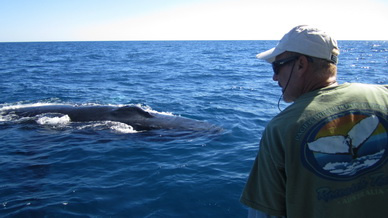
All humpback whales are protected under Australian law, but Migaloo and other humpback whales that are more than 90% white are “special management marine mammals” and have extra protection: boats and vessels cannot approach within 500 metres and aircraft cannot approach within 610 metres. These laws are necessary because people are so anxious to see Migaloo that they act irresponsibly. He was struck by a boat in 2003 and has scars on his back from that encounter.
While the classic “Moby Dick” focused on a fictional all-white whale, Migaloo is the only known occurrence of an all-white humpback whale in the 20th century. This is based on records kept by whalers of the tens of thousands of humpback whales killed during the first half of the 20th century, and the observations by whale researchers during the second half of the century. Because the whale is so visible and easily identified, Pacific Whale Foundation researchers have been able to gather a lot of data about its sightings — without the use of radio tags. This has helped researchers better understand the migratory pathways of humpback whales in the South Pacific. There have also been sightings of white orcas, a white right whale and a bottlenose dolphin with albinism throughout the years.
Pacific Whale Foundation is a nonprofit organization founded in 1980 to protect a declining humpback whale population from global threats. We have since expanded our mission to protect the ocean through science and advocacy and to inspire environmental stewardship. We are able to carry out this mission thanks in part to our social enterprise model, in which all proceeds from ecotours in both Australia and Maui go directly to PWF Research, Education and Conservation programs. You never know; while out on a Pacific Whale Foundation Eco-Adventures Australia Whalewatch, YOU might be the next one to spot the rare and beautiful Migaloo, while also supporting programs that keep this vulnerable species protected.
You can symbolically adopt Migaloo to help support the ongoing research efforts at Pacific Whale Foundation, which enable us to compile long-term information on humpback whales to help understand their social behaviors, migratory patterns, and life spans. If you have any questions, please contact us at [email protected]. Mahalo for making a difference!
